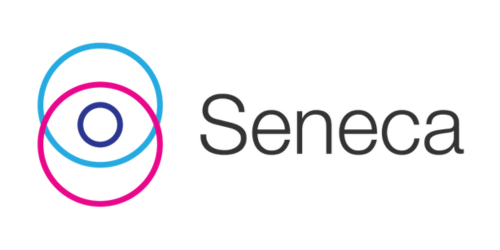In May, between busy half-year and full-year results reporting seasons, brokers typically host conferences with a variety of ASX companies presenting to institutional investors.
Here are 5 things the Seneca investment team looks at when assessing the associated investor presentations, trading updates and profit upgrades/downgrades.
1. Beat/miss vs expectations
There is only one sustainable way to make money in the stock market, it’s a 3-step process.
Step 1: understand what you know.
Step 2: understand what everyone else knows.
Step 3: understand how to exploit the difference.
Analyst consensus estimates are our best proxy for “market expectations” and as such, understanding what consensus opinion is, the distribution of that “average” and the key point of contention or uncertainty (which are normally only resolved once management provide an update).
During conference season (or any reporting period for that matter), share price moves are highly dependent on whether the company’s actual performance matches, exceeds or falls short of the wider market’s forecast (consensus). When a company reports “record results” but declines in share price, it’s likely that the record results were already factored into the consensus opinion and in fact fell short of what the market was expecting.
Reporting metrics vary based on the sector the company operates in. For example, banks’ key profitability metrics are net interest margin (NIM) and return on equity (ROE). For a retailer, they’re commonly judged on same store sales growth and store rollout numbers. Mining companies – it’s all about production and unit costs. Understanding what metrics matters for each company is critical to successful investing. Even more important is understanding what drives rates of change in each metric and which of those are in, and out of management’s control.
2. Guidance updates
By the time May rolls around, a company has booked 10 out of 12 months of sales and profits. They have a pretty clear idea of where the final, full year number is going to land, as well as the operating momentum that’s likely to carry over into the new financial year. Conference season, as a result is often filled with guidance upgrades (and downgrades) and influential ‘outlook’ statements.
As we explained above, these are influential data points for setting ‘market expectations’ and ‘consensus’. And when the market misreads guidance, or management misguides the market (either too aggressively or conservatively), sometimes, an opportunity to profit presents itself.
This is why having a historical knowledge of the people and companies you are investing in is helpful. Understanding which companies and personalities are typically conservative or overly optimistic and having an idea of how well these biases are understood across the market weighs heavily in our investment process. It’s not information you can ‘look up’ on your Bloomberg or Factset terminal, but that almost makes it more important. In our view, these are some of the ‘street smarts’ that distinguish good and great fund managers.
3. Cost inflation
Inflation impacts all companies but not equally or evenly. Labour shortages, wage inflation and freight expenses asymmetrically impact mining companies, relative to say, a software company.
As mining companies are price takers, they can’t pass on price increases to customers and hence, margins are very sensitive to rising costs. Over the years, many have been guilty of assuming costs will be delivered on a ‘best case’ scenario. This has historically proven to be overly optimistic.
Due to the complexity of digging up thousands of tonnes of rock from which miners beneficiate small amounts of metal, by managing hundreds of staff in a dangerous, exposed, constantly changing, often remote environment – things inevitably go wrong.
During conference season, understanding which companies face easier (or tougher) mining conditions, who needs to spend additional ‘sustaining capital’ and who has already incurred these costs, who’s got access to the requisite talent, contractors, and equipment and who’s struggling… all of these factors and more go into assessing a management team’s ability to manage costs.
While it’s difficult for us, the company, and any mining analyst to forecast commodity prices, we can ensure we are invested with those companies poised to benefit most when prices are high, and protected best when prices are low.
4. Wording
All public announcements are carefully worded to project positivity. We pay a lot of attention to company transcripts, the choice of words used and how that wording changes through time.
In that analysis, we see a few common managerial ‘sleight of hand’ tricks you should watch out for:
Comparison periods: Companies love to disguise disappointing results by shifting the goalposts, picking and choosing comparison periods such as YoY (year over year) when QoQ (quarter over quarter) is down.
Being Slick: Glossing over current results to focus on future results, spending large amounts of time on non-financial data points (safety, culture, training and development etc.) and not addressing the elephant in the room in an upfront and transparent way are all red flags.
Adjustment metrics: EBITDA (earnings before interest, tax, depreciation and amortisation) is a commonly cited metric that is non-standard accounting. Lately, other metrics have sprung up like weeds, EBITDAX, EBITDA-S, and adjusted EBITDA, among others. These numbers should be taken with a pinch of salt and a heavy dose of scepticism.
“Record results”: If this phrase is absent, results are below previous highs. On the flip side, when it’s used after an acquisition has been completed it’s largely irrelevant unless they are talking about on a per share basis.
4. Outlook commentary
Investors typically look 9-12 months ahead of the current financial year. That’s why the stock market is best described as a ‘best guess’ of the future, not a representation of today as it stands.
As long-term investors, we want to understand not just next year’s earnings but the longer-term strategy, the structural challenges, opportunities, and threats facing the business and management. Any forecasts given by the people that know the company best (management) are helpful in forecasting future profits and arriving at a fair value, or intrinsic value for what the stock is worth today.
Sometimes great investment ideas come from shaking the trees, talking to management, customers, suppliers, and competitors – gaining a comprehensive understanding of the positive and negative drivers of the sector, industry and company, as well as how the people in the trenches see the landscape in their specific area changing.
The best, long-term, extraordinary investments in our view, often are rooted more in the ‘real world’ than on the interpretation of the Martin Place or Collins Street cowboys.
Meeting with practitioners is one of the best ways in our experience, to get critical context and live data about what’s happening in the real world, rather than trying to scrape out an incremental bit of intel from the same daily price moves every cowboy is watching all day, every day.
As a mentor of mine says: you don’t learn anything looking at the red and green numbers all day.
You’ve gotta get out to find out!



